Mohs Surgery
Mohs Surgery: Precision Skin Cancer Treatment with Exceptional Results
Mohs surgery is a highly specialized technique designed to treat skin cancer, particularly basal cell carcinoma and squamous cell carcinoma. This meticulous procedure involves the progressive removal of thin layers of cancerous skin, which are immediately examined under a microscope. The process is repeated until no cancer cells remain, ensuring the complete removal of cancerous tissue while preserving as much healthy tissue as possible. Mohs surgery is renowned for its high cure rate and its ability to maintain the cosmetic appearance of the skin.
Why Choose Mohs Surgery at Cumberland Skin?
At Cumberland Skin, our Mohs surgeons are specially trained in this precise technique, leading to the highest success rate of all skin cancer treatments. With cure rates approaching 99 percent, you can trust that you’re in expert hands. Mohs surgery is not only about removing cancer—it’s about doing so with minimal impact on your appearance, making it an ideal choice for treating skin cancer in delicate or visible areas.
Opting for Mohs surgery at Cumberland Skin means choosing the gold standard in skin cancer treatment, where our specialists are dedicated to delivering the best possible outcomes. If you’re facing a skin cancer diagnosis, schedule a consultation with our expert Mohs surgeons and take a confident step toward recovery with a treatment plan that prioritizes both your health and your cosmetic concerns.
Examples of Mohs Surgery
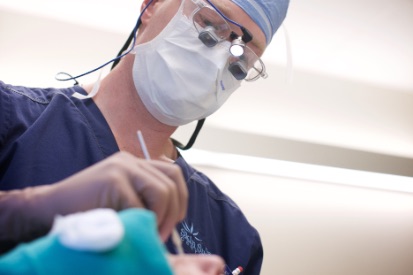
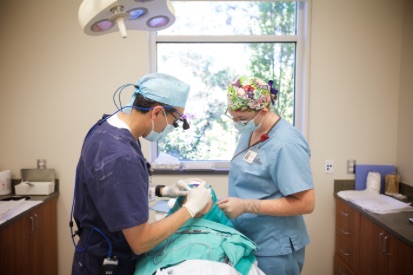
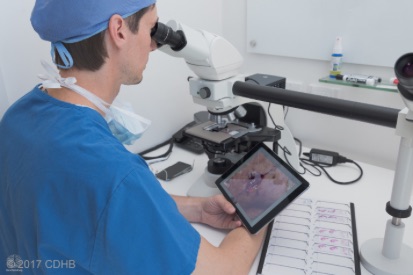
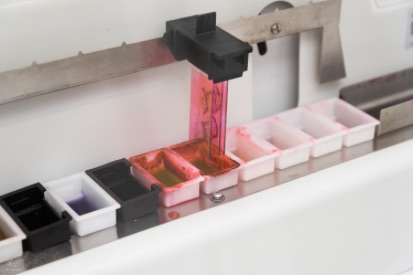
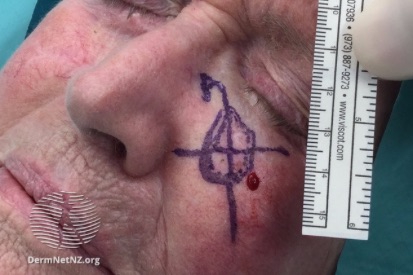
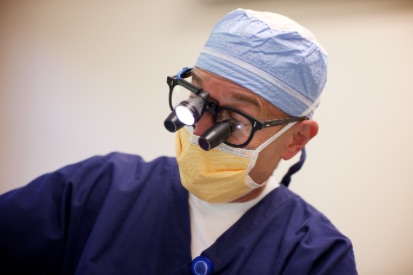
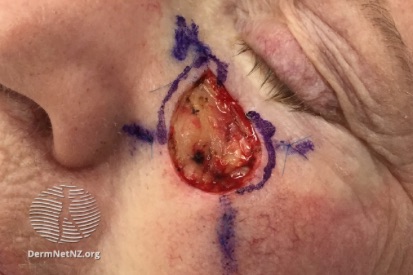
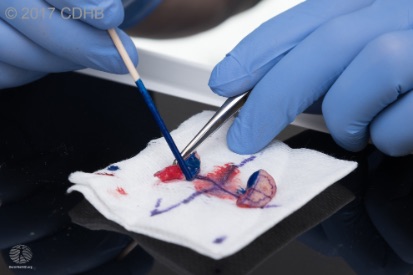
What is Mohs Surgery?
This technique allows dermatologists, trained in Mohs surgery, to see beyond the visible disease, and to precisely identify and remove the entire tumor, leaving healthy tissue unharmed.
This procedure is most often used in treating three of the most common forms of skin cancer: melanoma, basal cell carcinoma and squamous cell carcinoma.
What are the Benefits of Mohs?
How Cumberland Skin Can Help
Mohs Surgery FAQs
Mohs surgery is the most effective treatment for many squamous cell carcinoma and basal cell carcinomas. Using detailed techniques, the Mohs surgeon can pinpoint areas involved with cancer that are otherwise invisible to the naked eye. This allows the surgeon to remove even the smallest microscopic roots of cancer while removing as little normal skin as possible.
No. Mohs surgery is performed in an outpatient surgical suite and you may return home the same day.
Your appointment will be scheduled early in the day. Our staff will escort you into a surgical suite where the surgeon will numb the area around the skin cancer. Once it is numb, the visible cancer and a thin layer of tissue will be removed. This tissue is carefully mapped and coded by the surgeon and taken to the adjacent laboratory where the technician will immediately process the microscope slides. You will have a temporary dressing placed over the wound and you will be free to return to the reception area.
The surgical procedure alone takes 10-15 minutes. However, it takes a minimum of 1 1/2 to 2 hours to prepare and microscopically examine the tissues of each layer. Several surgical stages and microscopic examinations may be required, and you will be asked to wait in the patient reception area between stages. Although there is no way to tell before surgery how many stages will be necessary, most cancers are removed in three stages or less.
We would like to make the time you spend with us as pleasant and comfortable as possible. You may want to bring reading material to occupy your time while waiting for the microscope slides to be processed and examined. You may want to bring a sweater, as the temperature in our office varies. Magazines and beverages will be available in the reception area. If your visit extends through the lunch hour, your companion may visit the hospital cafeteria and bring you a snack or lunch since you are asked not to leave the reception area of our office.
The most difficult part of the procedure is waiting for the results from the laboratory. Since we do not know in advance how much time is necessary to remove the cancer and repair the wound, we ask that you plan to be in the office the entire day and that you make no other commitments. Please be sure to inform your companion and/or driver of this.
Mohs surgery will leave a scar just like any other treatment, however, because Mohs surgery removes as little normal tissue as possible, scarring is minimized. Immediately after the cancer is removed, we may choose (1) to leave the wound to heal itself, (2) to repair the wound with stitches, or (3) to reconstruct the wound with a skin graft or flap. This decision is based on the safest method that will provide the best cosmetic result.
From Our QualDerm Family of Providers: Mohs Surgery for Skin Cancer from Board-Certified Mohs Surgeon Dr. Paula Lapinski
What to Expect at Your During Your Mohs Procedure
Once the obvious tumor is removed, Mohs surgeons:
- remove an additional, thin layer of tissue from the tumor site.
- create a “map” or drawing of the removed tissue to be used as a guide to the precise location of any remaining cancer cells.
- microscopically examine the removed tissue thoroughly to check for evidence of remaining cancer cells.
- return to the specific area of the residual tumor indicated by the map
- remove another thin layer of tissue only from the specific area(s) where cancer cells were detected
- microscopically examine the newly removed tissue for additional cancer cells
How to Prepare for Mohs Surgery
These are general recommendations. We recommend working closely with your specific provider to plan and prepare for your Mohs surgery.
Planning for Recovery after Mohs Surgery
- Firstly, arrange for someone to drive you home after the procedure, as you may feel groggy from any anesthesia used.
- Plan to take it easy for a day or two, avoiding strenuous activities.
- And, follow your surgeon's post-operative care instructions diligently, which may include keeping the wound clean and dry.
After having one skin cancer, statistics show that you have a higher chance of developing a second skin cancer. You should have your skin checked by your referring dermatologist at least once a year for four years not only to examine the treated skin cancer but also to check for new skin cancers.
Featured Products for Sun Protection

SkinMedica Total Defense & Repair Broad Spectrum Sunscreen
Revolutionary non-tinted superscreen goes beyond UV protection to defend against harmful infrared rays while supporting the skin’s ability to restore itself. Appropriate for all skin types. 65 g / 2.3 oz

SkinMedica Total Defense & Repair Tinted Broad Spectrum Sunscreen
Revolutionary tinted superscreen goes beyond UV protection to defend against harmful infrared rays while supporting the skin’s ability to restore itself. Appropriate for all skin types. 65 g / 2.3 oz
Related Blog Posts
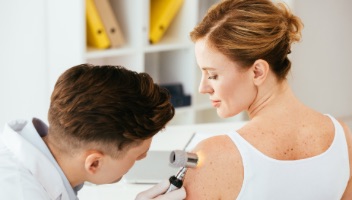
- Skin Cancer
- General Dermatology
- Skin Exams
- Sun Safety
If your dermatologist finds a suspicious mole during your TBSE, hey want to perform a skin biopsy.
Read More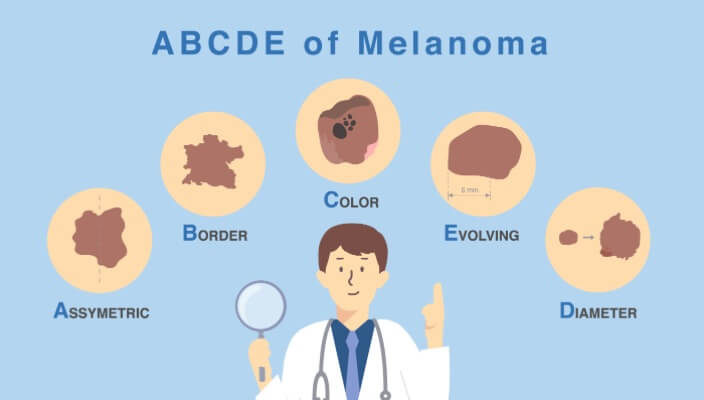
- Skin Cancer
- Skin Exams
Discover the ABCDEs of melanoma. Familiarize yourself with the five key indicators to aid in early detection and prompt medical attention for any suspicious moles or skin lesions.
Read More
- Skin Cancer
- General Dermatology
- Skin Exams
- Sun Safety
Uncover the unparalleled benefits of Mohs surgery. Learn how this precise technique ensures minimal tissue removal while maximizing cancer removal rates, offering patients superior outcomes in skin cancer treatment.
Read More

